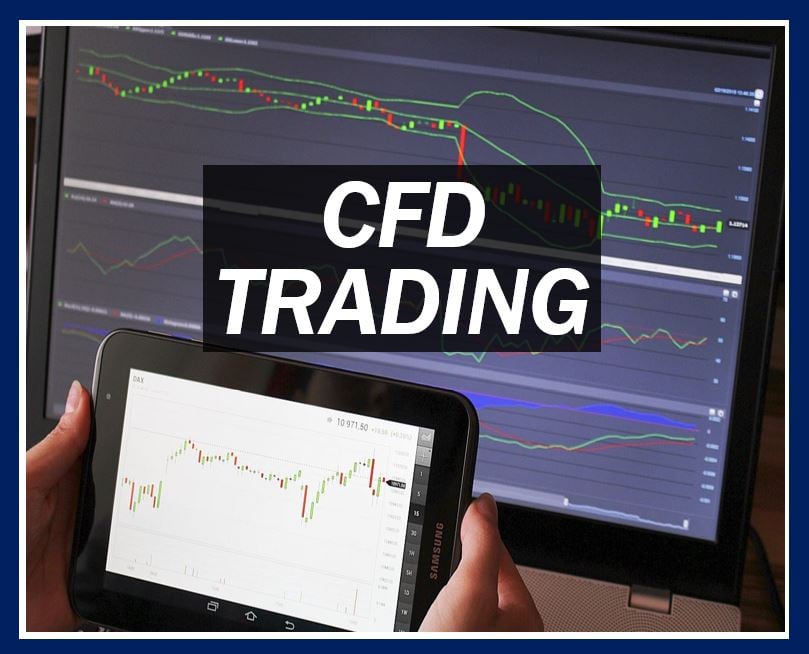
Dive into the dynamic world of index CFDs, where the pulse of global markets is at your fingertips. This guide unveils the nuts and bolts of trading with leverage, margin, and more. Ready to ride the waves of market indices? Let's amplify your financial literacy in a flash! You must keep learning about investing to stay updated and educated! Gas i7 Evex is the link to expert educational insights, helping traders master the complexities of trading CFDs on indices.
Step-by-Step Guide on How CFDs on Indices Work
Trading Contract for Differences (CFDs) on indices allows investors to speculate on the movement of index prices without owning the underlying assets. Here's how it works: First, you select an index, such as the NASDAQ or S&P 500. You then decide whether you believe the index will rise or fall in the near future and open a buy (long) or sell (short) position accordingly .
For instance, if you anticipate that the S&P 500 will increase, you would open a long position. Conversely, if you expect it to decrease, you would open a short position. The profit or loss of your trade depends on the accuracy of your prediction. If the index moves in the direction you anticipated, you close your position at a profit. If it moves against your prediction, you close at a loss.
The beauty of CFD trading is its accessibility. You can enter the market with a relatively small amount of capital, thanks to leverage (which we'll discuss next). It's crucial, however, to understand the market trends and factors influencing index movements.
Whether it's economic indicators, political events, or market sentiment, being informed can significantly impact your trading decisions. Remember, while CFDs offer the opportunity for high returns, they also carry a high level of risk, especially without proper risk management strategies in place.
Discussion on Leverage and Its Implications in Index CFDs
Leverage is a powerful tool in index CFD trading that allows traders to gain a large exposure to the market with a relatively small initial capital outlay. It works by using a deposit, known as margin, to provide exposure to an underlying asset. For example, if a trader uses 1:100 leverage, they could control $100,000 in the market with just $1,000 in capital.
While leverage can significantly increase potential profits, it also amplifies potential losses. This double-edged sword means that a small market movement can have a proportionally higher impact on your traded capital. For example, a 1% increase in the market can lead to a 100% loss of your margin if the 1:100 leverage is used.
Responsible use of leverage involves not only understanding how it works but also implementing robust risk management strategies. These include setting stop-loss orders to limit potential losses, continuously monitoring market conditions, and being prepared to respond to market news and events quickly. Traders should also be aware of how leverage ratios can change under different market conditions and adjust their strategies accordingly.
Role of Margin and Margin Calls in Trading CFDs on Indices
Margin is the initial capital required to open and maintain a leveraged position in index CFD trading. Think of it as a good faith deposit that is used to cover losses that may occur during trading. The amount of margin needed varies depending on the size of the trade and the policies of the broker.
A margin call occurs when the value of your account falls below the broker's required minimum. This typically happens when an open position moves against you. The broker will either request additional funds to maintain the position or close the position to limit further losses.
Understanding and managing margin is critical to successful trading. This involves not only keeping track of your profit and loss but also being aware of your account balance and margin requirements at all times. Efficient use of margin can help maximize trading potential, but poor management can lead to quick and significant losses.
Traders can protect themselves by using conservative amounts of leverage, setting automatic stop-loss orders, and keeping a buffer in their account above the minimum margin requirements. Always be mindful that margin trading can amplify both gains and losses, making it essential to approach with caution and strategy.
Conclusion
Embarking on the index CFD journey equips you with powerful tools for navigating the financial markets. Remember, with great power comes great responsibility—use leverage wisely. Stay informed, stay agile, and turn market insights into strategic gains. Happy trading!
Interesting Related Article: “What CFDs Should I Trade Forex, Commodities, or Stocks?”









